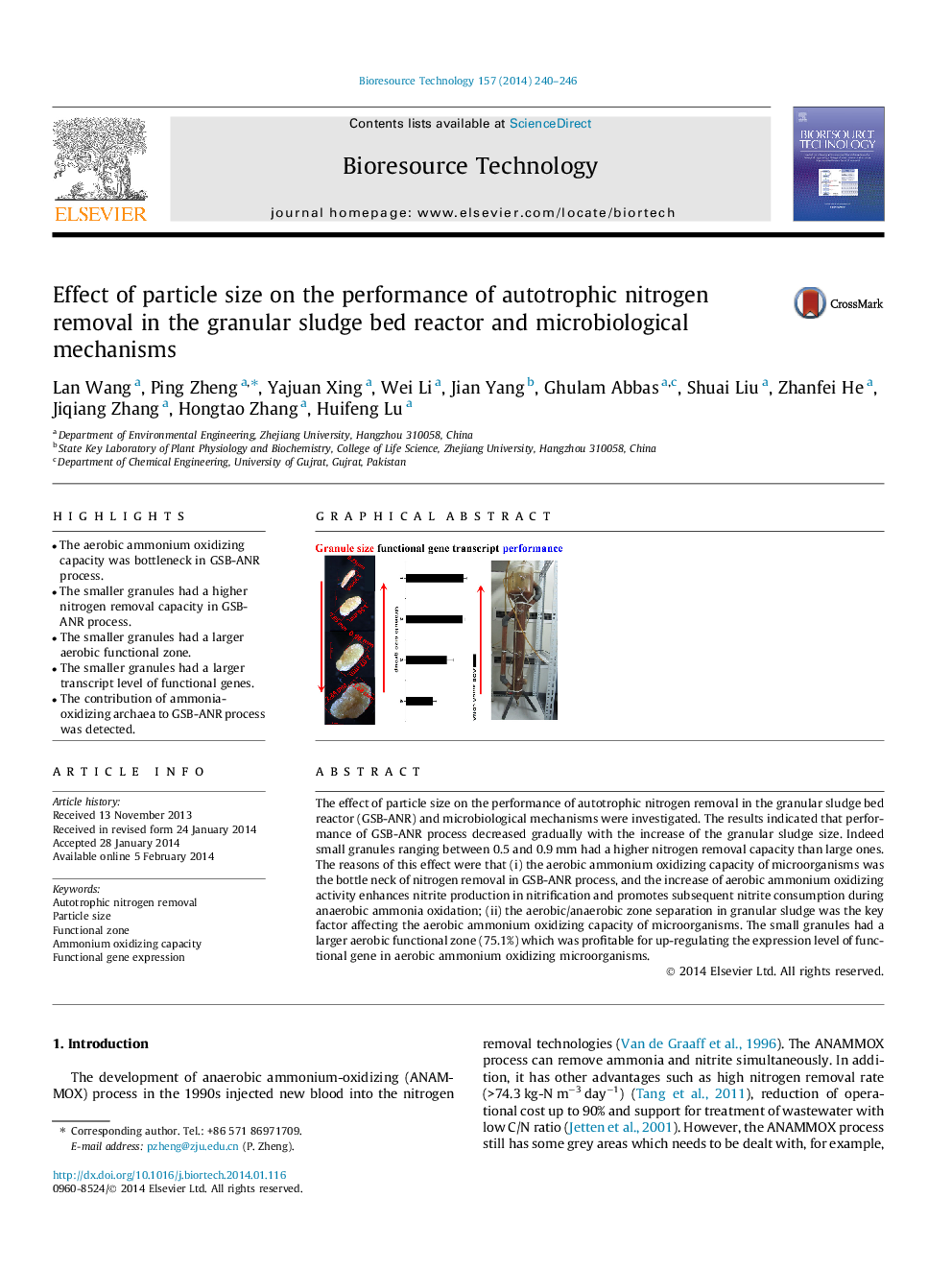| Article ID | Journal | Published Year | Pages | File Type |
|---|---|---|---|---|
| 680911 | Bioresource Technology | 2014 | 7 Pages |
•The aerobic ammonium oxidizing capacity was bottleneck in GSB-ANR process.•The smaller granules had a higher nitrogen removal capacity in GSB-ANR process.•The smaller granules had a larger aerobic functional zone.•The smaller granules had a larger transcript level of functional genes.•The contribution of ammonia-oxidizing archaea to GSB-ANR process was detected.
The effect of particle size on the performance of autotrophic nitrogen removal in the granular sludge bed reactor (GSB-ANR) and microbiological mechanisms were investigated. The results indicated that performance of GSB-ANR process decreased gradually with the increase of the granular sludge size. Indeed small granules ranging between 0.5 and 0.9 mm had a higher nitrogen removal capacity than large ones. The reasons of this effect were that (i) the aerobic ammonium oxidizing capacity of microorganisms was the bottle neck of nitrogen removal in GSB-ANR process, and the increase of aerobic ammonium oxidizing activity enhances nitrite production in nitrification and promotes subsequent nitrite consumption during anaerobic ammonia oxidation; (ii) the aerobic/anaerobic zone separation in granular sludge was the key factor affecting the aerobic ammonium oxidizing capacity of microorganisms. The small granules had a larger aerobic functional zone (75.1%) which was profitable for up-regulating the expression level of functional gene in aerobic ammonium oxidizing microorganisms.
Graphical abstractFigure optionsDownload full-size imageDownload as PowerPoint slide
